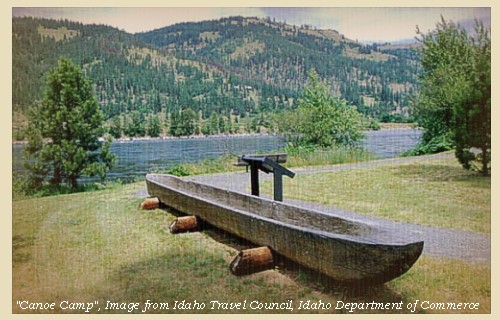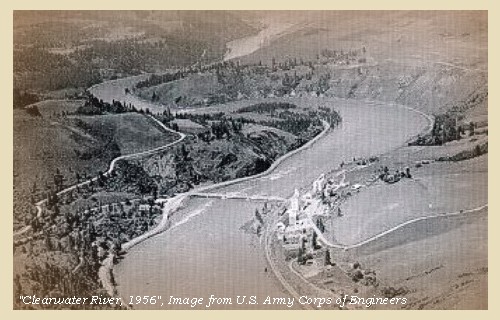The Volcanoes of
Lewis and Clark
Lewis and Clark
|
October 5 - 6, 1805 The Journey Begins - Canoe Camp |
|
Home
The Volcanoes of Lewis and Clark Map of the Journey Volcanoes, Basalt Plateaus, Major Rivers, etc. The Volcanoes Mount Adams, Mount Hood, Mount Jefferson, Mount Rainier, and Mount St. Helens CALENDAR of the Journey October 1805 to June 1806 Along the Journey Pacific Northwest Maps - Columbia River, Volcanoes, Flood Basalts, Missoula Floods, Geology, etc. The Corps of Discovery The Journey of Lewis and Clark About the Reference Materials The Journals, Biddle/Allen, DeVoto, Gass, Moulton, Topo Maps, and others USGS Lewis and Clark Links Links to USGS Websites highlighting the Lewis and Clark Journey Resources Publications Referenced and Websites Visited |
INTRO
The Volcanoes of Lewis and Clark |
October 5-6
The Journey Begins, Canoe Camp Canoe Camp, Orofino (Idaho), Dworshak Dam, Nez Perce National Historical Park, and the Clearwater River |
CONTINUE
October 7-9 On the Clearwater, Canoe Camp to the Potlatch River |
|
To the Pacific - October 1805
The Journey Begins -- Canoe Camp |
| Between September 26 and October 7, 1805, Lewis and Clark camped at the confluence of the North Fork Clearwater River with the main stem Clearwater River, approximately 4 miles west of today's Orofino, Idaho. This site is called "Canoe Camp". |
| Saturday, October 5, 1805 |
| The wind easterly, and the weather cool. The canoes being nearly finished it became necessary to dispose of our horses. They were therefore collected to the number of thirty-eight, and being branded and marked were delivered to three Indians, the two brothers and the son of a chief, who promises to accompany us down the river [Clearwater River]. To each of these men we gave a knife and some small articles, and they agreed to take good care of the horses till our return. ...... |
| "... Lattitude of this place from the mean of two observations is '46o 34' 56.3" North -- ..." [Clark, October 5, 1805] |
| "... The hills high and ruged and woods too dry to hunt the deer which is the only game in our neighbourhood ..." [Clark, October 5, 1805] |
| Sunday, October 6, 1805 |
| This morning is again cool, and the wind easterly. ...... We had all our saddles buried in a cache near the river [Clearwater River], about half a mile below, and deposited at the same time a canister of powder, and a bag of balls. The time which could be spared from our labours on the canoes, was devoted to some astronomical observations. The latitude of our camp as deduced from the mean of two observations is 46o 34' 56"; 3"'; north. |
| "... The river below this forks is Called 'Kos-kos-kee'. it is Clear rapid with Shoals or Swift places -- The open Countrey Commences a fiew miles below This on each side of the river, on the Lard Side below the 1st Creek. with a few trees Scattered near the river. ..." [Clark, October 6, 1805] |
|
|
|
The Camp - September 26 to October 7, 1805:
Between September 26 and October 7, 1805, Lewis and Clark camped at the confluence of the North Fork Clearwater River with the main stem Clearwater River, approximately 4 miles west of today's Orofino, Idaho. At this site, called "Canoe Camp", the Lewis and Clark expedition, aided by the Nez Perce, built five canoes for their journey down the Columbia River. Today, Dworshak Dam, the tallest dam in Idaho, is located approximately one mile upstream on the North Fork Clearwater River. Canoe Camp is part of the Nez Perce National Historic Park. |
| Home | Continue |
If you have questions or comments please contact: GS-CVO-WEB@usgs.gov
June/July 2004, Lyn Topinka
The Volcanoes of Lewis and Clark Home Page | CVO Home Page












